
- •Vocabulary
- •Vocabulary
- •Vocabulary
- •Vocabulary
- •Ancient science
- •Vocabulary
- •История химии
- •Vocabulary
- •Vocabulary
- •14 Apt., 161, Leninast., Izhevsk, Udmurt republic, Russia 426000
- •Vocabulary
- •Vocabulary
- •Vocabulary
- •Immune System. Immunology
- •Vocabulary
- •Immunology
- •A useful vitamin
- •Vocabulary
- •3. Translate the following sentences paying attention to the words in italic.
- •Vocabulary
- •Virology
- •Virology and viruses
- •Vocabulary
- •Vocabulary
- •Vocabulary
- •Vocabulary
- •Vocabulary
- •Vocabulary
- •Vocabulary
- •3Dсимуляторы лабораторных животных
- •Vocabulary
- •Proteins
- •B) Ribonucleic acid functions in converting genetic information from genes into the amino acid sequences of proteins.
- •In combating well-established tumors
Vocabulary
abnormality
acquire (v)
activate (v)
adhesion
adjacent tissues
affect (v)
be caused (v)
carcinogen [k:’sinədзən]
cell cycle
chemicals
complex
concern (v)
destruction
differentiate (v)
display (v)
division
DNA replication
form (v)
genome
heritability
host
inherit (v)
interaction
intrusion
invade (v)
invasion
lymph
malignant neoplasm
metastasis
metastasize (v)
prevention
property
spread (v)
tumor
uncontrolled growth
via [viə]
2. Complete the sentences using the words from the vocabulary list.
The medical term for ‘cancer’ is _______.
Uncontrolled growth, invasion and metastasis _______ cancer from benign tumor.
Cancer cells spread to other locations via _____ or _____.
Tobacco smoke, radiation, chemicals are ______.
Cancer-promoting oncogenes are ____ in cancer cells, while tumor suppressor genes are _____.
Pathologist makes ________.
With the help of a combination of surgery, chemotherapy and radiotherapy cancer can be _____.
3. Find Russian equivalents to these English word combinations.
Oncogenes Transformed cell Оncology Benign tumor Heritability Uncontrolled growth Fetuses Inherited Devastating Tumor suppressor gene Due to Histologic examination Abnormalities in the genetic material Infectious agent People at all ages Hyperactive growth and division Programmed cell death Loss of normal tissue boundaries |
Неконтролируемый рост Утробный плод Люди всех возрастов Запрограммированная гибель клетки Пагубный для здоровья Трансформированная клетка Аномалии генетического материала Трансформирующий ген, онкоген Гиперактивный рост и деление Подавляющий опухоль ген Унаследованный Наследуемость Благодаря Потеря нормальных границ ткани Доброкачественная опухоль Онкология Инфекционный агент Гистологическое обследование |
4. Give definitions of the following terms:
Intrusion
Destruction
Division
Metastasis
Examination
5. Answer the questions according to the sense of the text.
What is the definition of the term ‘cancer’?
What is the medical term for ‘cancer’?
Do all cancers form a tumor?
What is oncology?
Whom can cancer affect?
What causes cancer?
How can abnormalities in the genetic material appear?
What do genetic abnormalities affect?
How do cancer-promoting oncogenes influence on cells?
What information did you read about tumor suppressor genes?
What does diagnosis usually require?
Can cancers be treated or cured and how?
What is the statistics of cancer affects?
6. Are the following sentences true or false? Correct the false statements if any.
When a person has cancer, he can control the growth of infected cells.
Leukemia is a form of cancer.
Mostly children have cancer.
Cancer cannot affect different animals.
Abnormalities in the genetic material can be the reason of cancer.
Cancer can never be inherited.
The host’s genome do not influence on the cancer heritability.
Cancer-promoting oncogenes do not endow cells with new properties.
Tumor suppressor genes are activated in cancer cells.
Pathologist makes the histological examination.
It is impossible even to treat cancer.
Cancer is of the mildest diseases and can be treated with aspirin.
7. Put the words in the correct order to make sentences or questions.
Differentiate/ uncontrolled growth, invasion/ benign tumor/ and metastasis/ cancer/ from.
Of getting/ with age/ does/ the risk/ cancer/ increase?
Can/ all/cancers/ affect/ animals.
due to/may be/ abnormalities/ in the genetic material/ of carcinogens/ of the transformed cells/ the effects
and/the heritability of cancers/ is/ by carcinogens/ the host's genome/affected?
Diagnosis/ usually/ the histological examination/requires/of a tissue biopsy/ of cancer.
8. Make a detailed plan of the text. You can add some key-words to it if necessary.
Retell the information given in the text with your own words using your plan from the previous exercise.
10. Comment the drawing below. What are the functions of those cell parts? What does cancer affect?
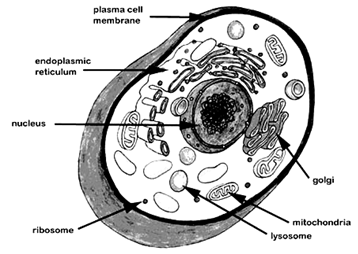
11. Make your investigation and find out the origin and history of the term ‘cancer’.
12. Study all types of the conditional sentences. Open the brackets in the conditional sentences making necessary changes. Translate them properly into Russian.
Example: If he (come) tomorrow, he will help us. — If he comes tomorrow, he will help us.
1) If you (put) salt on ice, it will melt. 2) Provided that she (service) the car, we'll be able to drive to the country. 3) Unless he (do) his homework, he'll stay at home. 4) If you met the president, what you (do)? 5) If he (live) nearer, we would see each other more often. 6) Where you (go) if you were on leave? 7) She (notice) this mistake if she had been more attentive. 8) If we (know) that you were there, we would have called on you. 9) If I had known of his arrival, I (meet) him. 10) Nobody told me about your trouble. I would have helped you if I (know) about it.
13. Translate into English.
1) Ты бы расстроился (beupset), если бы я не пришел? 2) Будь он осторожнее, он бы не упал. 3) Если бы он не приехал на машине встретить нас, нам бы самим пришлось нести свои вещи. 4) Ты бы пошла куда-нибудь вечером, если бы он тебя пригласил? 5) Мы бы поехали сегодня в бассейн, если бы вы позвонили вчера вечером. 6) Если бы он мог дать положительный (positive) ответ, он бы давно это сделал. 7) Я бы на твоем месте не стал бы поднимать такой шум (raiseaclamor). 8) Если бы ты принял его предложение, ты бы давно работал в хорошей фирме. 9) Будь я на вашем месте, я бы пошел пораньше, чтобы застать его. 10) Если бы он вел машину осторожнее, никакой бы аварии не произошло.
14. Spend one minute writing down all of the different words you associate with the word ‘sunshine’. Share your words with your partner / group and talk about them.
15. In pairs / groups, decide which of these opinions you agree with. Discuss how much truth there is in each one.
The sun is good for you.
You must wear sun block / sunscreen every time you go outside.
Being in the sun is bad because it causes wrinkles and makes you look older.
Sun tanned skin doesn’t look good.
Buying vitamin D supplements is a waste of time. The sun is free.
People worry too much about UV rays.
Sunshine is dangerous in areas where there is a hole in the ozone layer.
People who sunbathe are crazy.
Feeling the warmth of the sun on your skin is one of life’s greatest pleasures.
Our bodies need sunshine.
16. Look at the article’s headline in the next exercise and guess whether these sentences are true (T) or false (F):
|
|
|
|
|
|
|
|
|
|
|
|
|
|
|
|
|
|
|
|
|
|
|
|
17. Read this article and translate it. Pay attention to the underlined phrases and correct the word order.
Sunshine may prevent cancer
Scientists have years for us told many that the sun can harm our health. Researchers have produced many studies that link exposure to the sun to cancer. Doctors about us warn continually the dangers of ultraviolet (UV) rays. Well, all of this might now change. Doctors and scientists may soon be telling us the opposite. New research suggests that sunshine bodies is for our necessary. Our skin absorbs the UV rays and produces vitamin D, also known as the ‘sunshine vitamin’.
Dr. Edward Giovannucci of Harvard University says that vitamin D contains many anti-cancer benefits. He believes vitamin D might help to prevent of 30% more deaths than caused by skin cancer. It might now put the time to be sunscreen away. Doctors may soon recommend us to spend fifteen minutes a day in direct sunlight. They say this will allow our skin to produce the vitamin D we need. Researchers highlight the fact that there are fewer people with cancer in the world parts of sunnier.
18. Match the following synonyms from the article:
1) |
harm |
aka |
2) |
studies |
includes |
3) |
exposure |
damage |
4) |
suggests |
urge |
5) |
also known as |
contact |
6) |
contains |
a quarter of an hour |
7) |
prevent |
point out |
8) |
fifteen minutes |
reports |
9) |
recommend |
stop |
10) |
highlight |
indicates |
19. Match the following phrases from the article (sometimes more than one combination is possible):
-
1)
Scientists have told us
skin cancer
2)
Harm
‘sunshine vitamin’
3)
warn us about
benefits
4)
may soon be telling us the
our health
5)
also known as the
Opposite
6)
contains many anti-cancer
Sunlight
7)
vitamin D might help to prevent
of the world
8)
caused by
for many years
9)
direct
the dangers
10)
sunnier parts
More than 30% of deaths
20. Look at the words below. With your partner, try to recall exactly how these were used in the text:
|
|
21. Look in your dictionaries to find collocates, other meanings, information, synonyms for the words ‘sun’ and ‘shine’.
Share your findings with your partners.
Make questions using the words you found.
Ask your partner / group your questions.
22. In pairs / groups write down questions about sunshine.
Ask other classmates your questions and note down their answers.
Go back to your original partner / group and compare your findings.
Make a mini-presentation to another group / the class on your findings.
23. Read this conversation. Translate it, paying attention to the explained in the following vocabulary phrases.
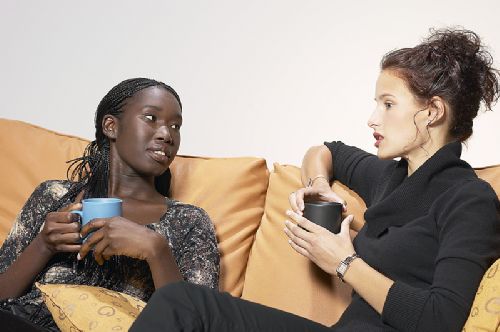
A: Hey, you look great. Did you just get back from vacation?
B: No. Why?
A: What do you mean why? It’s the middle of winter and everyone else is as white as a ghost. You look like you’ve been lying on a beach somewhere.
B: Alright, I’ll tell you. But I don’t want to hear any of your negativity. I’ve been hitting the tanning salon once a week.
A: I don’t see anything wrong with that. I’d actually like to try it. What’s it like?
B: The place I go you have to pay by the minute. It costs about 75 cents per minute and you really just need to go for one, twelve-minute session per week. You can get 20% off if you buy their $25 VIP card.
A: What do you think about the safety of them?
B: Many experts warn of the cancer causing risks of tanning. They say that overexposure to UVA and UVB rays cause genetic mutations that lead to skin cancer. I try to play it fairly safe and make sure I don’t go too often. I also don’t go in for longer than 12 minutes.
A: That’s a good idea. How long do some people go?
B: Some people seem to get addicted to it. I’ve met several people who go 5 times a week and tan for 20 minutes per session. I’d personally be afraid to do that much, not only because of the cancer risk, but also because of the pre-mature aging of the skin.
A: Are there any health benefits associated with tanning indoors?
B: Your skin does absorb some vitamin D from the UVB rays, but many experts say that the risks outweigh the benefits.
Phrases and Vocabulary used:
What do you mean why?: This is a rhetorical question (which means a question you don’t expect to be answered).
White as a ghost: During the winter when there isn’t as much sunlight, we sometimes joke with each other as “looking white as a ghost”. Many people believe that looking too white or pale skinned is not very attractive or healthy looking. It makes people want to get a suntan.
I don’t want to hear any of your negativity: If you say this sentence to someone, it means that you don’t want to hear any bad or negative opinion that they have.
Hitting the tanning salon: The tanning salon is a small business with indoor tanning beds. These tanning beds are made with special lights that simulate the sun’s rays. You can go there to get an artificial suntan. “Hitting the tanning salon” means “going to the tanning salon”.
Overexposure: If you are “overexposed” to something it means that you are in the presence of that thing too much and it is unhealthy.
Pre-mature aging: If something is “pre-mature” it means that it is happening before it is supposed to. If someone’s skin has aged pre-maturely, it means that their skin looks older than it really is.
The risks outweigh the benefits: This means that there are more dangers or risks than there are potential benefits.
24. Study this dialogue by heart or make your own dialogue on the same topic using the vocabulary phrases.
25. Translate this text.
Витамин Д, солнце, рак и загар
Витамин Д, или кальциферол, - это общее название для животного витамина Д3 и растительного витамина Д2. Название «кальциферол» происходит от слов: calcium и ferro (нести). Недостаток витамина Д вызывает сходное с рахитом заболевание, характеризующееся всеми симптомами недостатка кальция в организме: повышенной нервной возбудимостью, беспокойством, нарушением мышечного тонуса, слабыми подёргиваниями мышц, отложением камней в почках, кариесом, остеомаляцией (размягчением костей).
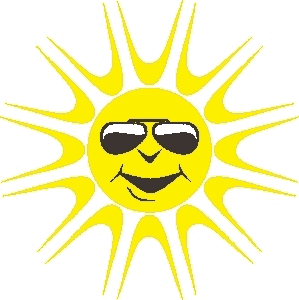 Организм
может черпать готовый витамин Д3 из
пищи. Однако не пища является основным
источником кальциферола. Витамин
способен синтезироваться в коже человека
под влиянием ультрафиолетовых лучей
солнца. Всемирно известный биохимик
А. Ленинджер говорит, что если лицо
ребёнка ежедневно хотя бы в течение 30
минут будет находиться под прямыми
солнечными лучами, этого достаточно
для обеспечения минимума суточной
потребности в витамине Д. Солнце
необходимо человеку в любом возрасте
и при любом заболевании. Всё дело в дозе
облучения.
Организм
может черпать готовый витамин Д3 из
пищи. Однако не пища является основным
источником кальциферола. Витамин
способен синтезироваться в коже человека
под влиянием ультрафиолетовых лучей
солнца. Всемирно известный биохимик
А. Ленинджер говорит, что если лицо
ребёнка ежедневно хотя бы в течение 30
минут будет находиться под прямыми
солнечными лучами, этого достаточно
для обеспечения минимума суточной
потребности в витамине Д. Солнце
необходимо человеку в любом возрасте
и при любом заболевании. Всё дело в дозе
облучения.
Солнечный спектр включает ультрафиолетовые лучи. А они при длительном воздействии небезопасны. Но солнечные лучи, профильтрованные через обычное стекло, т. е. лишенные ультрафиолетовой части спектра, полностью теряют канцерогенную активность. Экспериментальные исследования указывают на возможность радиозащитного действия загара. Вместе с этим солнечные лучи повышают адаптационные возможности организма, укрепляют иммунную систему. Ультрафиолетовое излучение стимулирует кроветворение, улучшает усвоение железа.
26. Role play game.
THE UNIVERSE” ROLE PLAY: This role play is to discuss and decide which is the most important part of the universe. Team up with classmates who have been assigned the same role to develop your roles and discuss ideas and “strategies” before the role play begins.
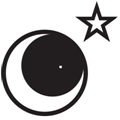 Introduce
yourself to the other role players before the role play begins.
Introduce
yourself to the other role players before the role play begins.
Role A – Sun
Some of your benefits:
You are the centre of the universe. There can be no life without you. You give warmth, light and energy.
Write why you are better than the moon and earth.
Role B – Moon
Some of your benefits:
You are mysterious. You control the movement of the earth’s oceans. You will not die one day like the sun. After the earth dies, people will live on you.
Why you are better than the sun and earth.
Role C – Earth
Some of your benefits:
You are the most important part of the universe. The most beautiful creatures and things live on you. Without earth there is nothing.
Why you are better than the moon and sun.
27. Make an information sheet about the benefits and dangers of UV rays. Write a for-and-against essay.
28. Write a letter of thanks to the sun. Explain how important you think the sun is and what part it plays in your everyday life. Next lesson show your letter to your classmates. Compare the things you wrote about.
Unit 16
Biotechnology.
General knowledge
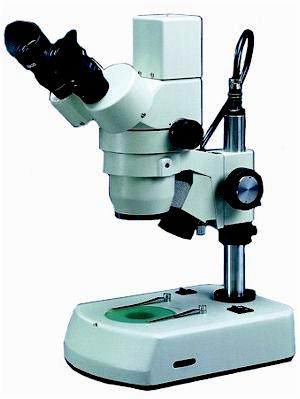 You
study at the faculty of Medical Biotechnology. Why did you choose
this faculty?
You
study at the faculty of Medical Biotechnology. Why did you choose
this faculty?
What field of biotechnology are you going to study in future?
Say in your words what biotechnology is.
1. Read this text and translate it.
What is biotechnology?
The term "Biotechnology" (sometimes shortened to "biotech") consists of two parts. Bio is a Greek word for "life" and technology gives an indication of human intervention. Biotechnology can be based on the pure biological sciences (genetics, microbiology, animal cell culture, molecular biology, biochemistry, embryology, cell biology). Also its interests can be outside the sphere of biology (chemical engineering, bioprocess engineering, information technology, biorobotics). Biotechnology deals with brewing, manufacture of human insulin, interferon, and human growth hormone, medical diagnostics, cell cloning and reproductive cloning, the genetic modification of crops, bioconversion of organic waste and the use of genetically altered bacteria in the cleanup of oil spills, stem cell research and much more.
As a matter of fact, biotechnology is very ancient. Six thousand years ago, micro-organisms were used to brew beers and to produce wine, bread and cheese.Yeast makes dough rise and converts sugars into alcohol. Lactic acid bacteria in milk create cheese and yoghurt. This application of biotechnology is the directed use of organisms for the manufacture of organic products (examples include beer and milk products). In this way, classical biotechnology refers to the traditional techniques used to breed animals and plants, as well as to the application of bacteria, yeasts and molds to make bread or cheese.
Modern biotechnology came into being during the nineteen seventies. Ithas often been divided into several categories; every field of this science is sometimes connected with the definite color.
Green biotechnology is biotechnology applied to agricultural processes. An example would be the selection and domestication of plants via micro propagation. Another example is the designing of transgenic plants to grow under specific environments in the presence (or absence) of chemicals. One hope is that green biotechnology might produce more environmentally friendly solutions than traditional industrial agriculture, although this is still a topic of considerable debate.
Red biotechnology is applied to medical processes. Some examples are the designing of organisms to produce antibiotics, and the engineering of genetic cures through genetic manipulation.
White biotechnology, also known as industrial biotechnology, is biotechnology applied to industrial processes. An example is using naturally present bacteria by the mining industry in bioleaching; so it is the designing of an organism to produce a useful chemicalor destroy hazardous/polluting chemicals. White biotechnology tends to consume less in resources than traditional processes used to produce industrial goods.
Blue biotechnology is a term that has been used to describe the marine and aquatic applications of biotechnology, but its use is relatively rare.
Bioinformatics is an interdisciplinary field which addresses biological problems using computational techniques, and makes the rapid organization and analysis of biological data possible. Bioinformatics plays a key role in various areas, such as functional genomics, structural genomics, and proteomics, and forms a key component in the biotechnology and pharmaceutical sector.
In conclusion biotechnology can berefered to any technological application that uses biological systems, living organisms, or derivatives thereof, to make or modify products or processes for specific use.
